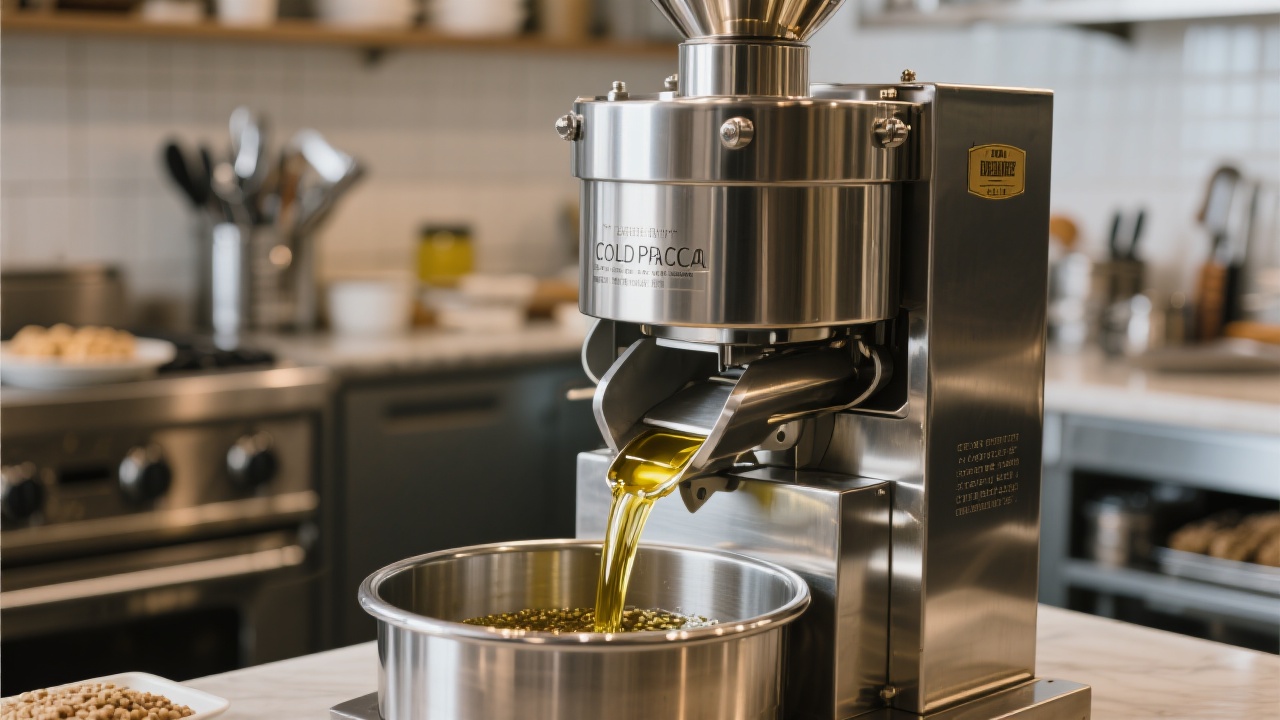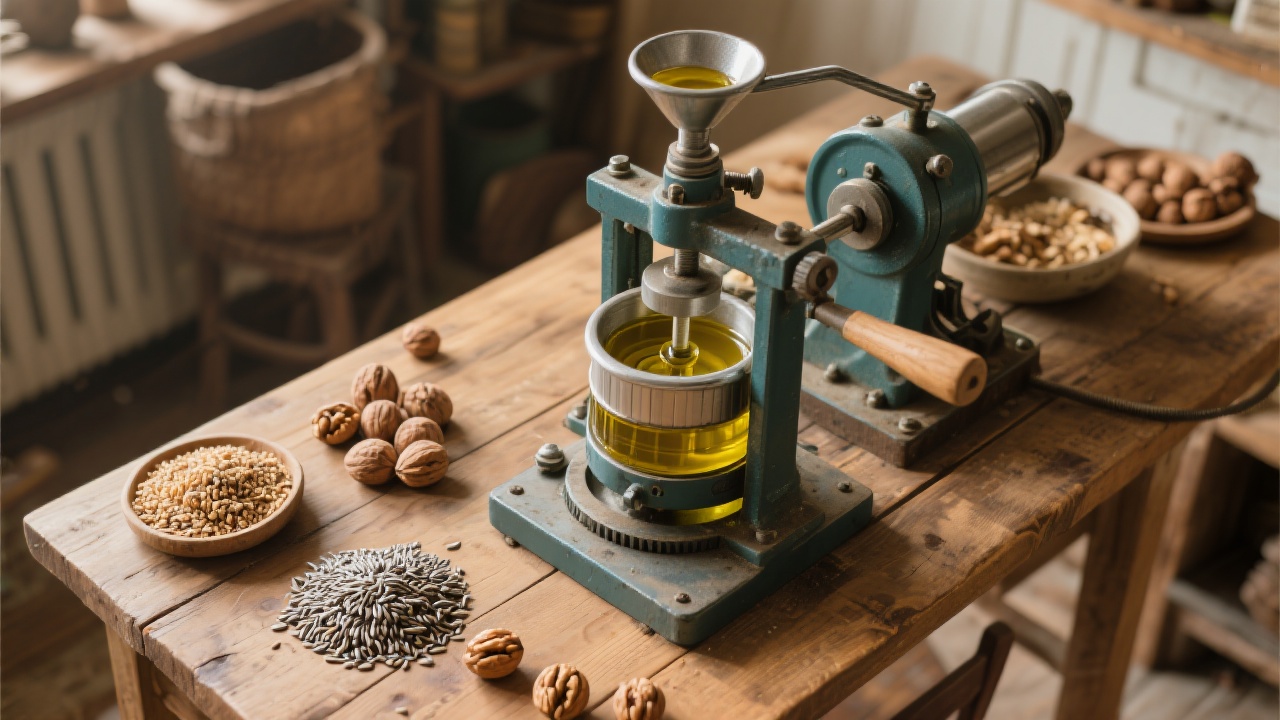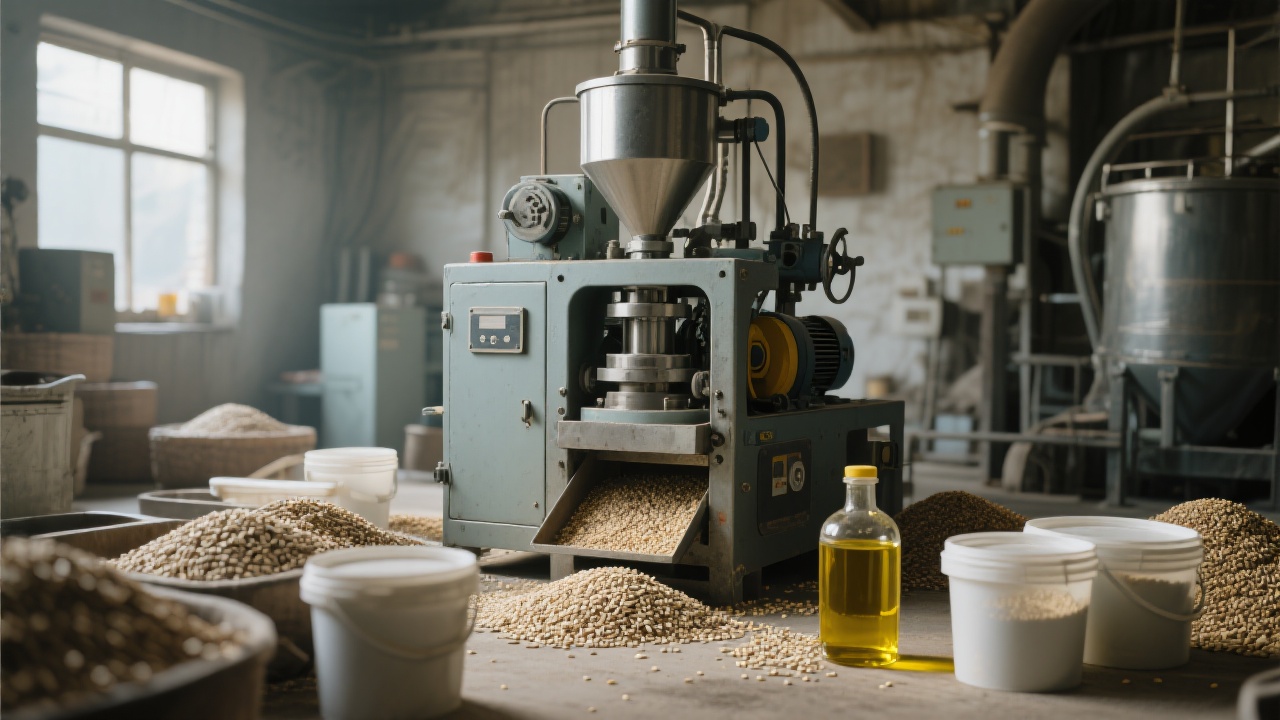
Have you ever wondered if the sesame oil you're buying is truly suitable for cold dishes? In this article, we'll take a deep dive into the process differences between cold-pressed and hot-pressed sesame oil. You'll learn how temperature affects the retention of vitamin E and unsaturated fatty acids, as well as the aroma intensity and suitable application scenarios. We'll also teach you how to use a small cold press to make high-quality sesame oil in small batches at home, enhancing the level of healthy cooking in your kitchen and making every drop of oil truly worthwhile!
Let's start by looking at the basic principles of cold-pressed and hot-pressed processes and their impacts on nutrition and flavor. Cold-pressed sesame oil is produced at a low temperature, usually below 60°C. This low-temperature process helps to retain a large amount of vitamin E and unsaturated fatty acids in the sesame seeds. Research shows that cold-pressed sesame oil can retain up to 90% of the original vitamin E in the seeds. On the other hand, hot-pressed sesame oil involves higher temperatures, often above 120°C. This high temperature can lead to a significant loss of vitamin E, with only about 30 - 40% remaining.

There are several differences between cold-pressed and hot-pressed processes in terms of temperature control, cost, and aroma retention. In temperature control, cold-pressed requires strict temperature management to ensure the quality of the oil. Hot-pressed, however, has a wider temperature range. From a cost perspective, cold-pressed often has a higher cost due to the need for more precise equipment and longer production time. When it comes to aroma retention, cold-pressed sesame oil has a milder and more delicate aroma, while hot-pressed oil has a stronger and more intense aroma.
| Aspect | Cold-Pressed | Hot-Pressed |
|---|---|---|
| Temperature | Below 60°C | Above 120°C |
| Cost | Higher | Lower |
| Aroma Retention | Milder | Stronger |
The choice between cold-pressed and hot-pressed sesame oil depends on the actual application scenario. For example, in cold dishes, cold-pressed sesame oil is a better choice because of its mild aroma and high nutritional value. It won't overpower the other ingredients in the dish and can bring out the natural flavors. In high-end restaurants, cold-pressed sesame oil is also often preferred for its premium quality. Hot-pressed sesame oil, with its strong aroma, is more suitable for stir-frying or adding a rich flavor to some heavy dishes.

Now, let's get to the exciting part - making cold-pressed sesame oil at home. First, you need to choose the right equipment. A small cold press is a great option. When using it, make sure to control the temperature well. Keep the temperature below 60°C to ensure the best quality of the oil. After pressing, store the oil in a dark and cool place to prevent oxidation. You can use glass bottles to store the oil, which can help to maintain its freshness for up to 6 months.
According to a study in a well - known food science journal, cold-pressed sesame oil can significantly improve the nutritional value of daily diets due to its high content of vitamin E and unsaturated fatty acids.
Making your own cold-pressed sesame oil at home is not only a fun activity but also a way to enhance the quality of your cooking. It's like the difference between slow - cooked and fast - fried food. Slow - cooked food often retains more nutrients and flavors, just like cold - pressed sesame oil. By learning these small - batch production techniques, you can add more value to your home - made products and enjoy healthier and more delicious meals.

Are you ready to start making your own cold - pressed sesame oil at home? Click here to learn more about high - quality sesame oil production and take your kitchen to the next level!
We'd love to hear your thoughts! Have you ever tried making sesame oil at home? Leave a comment below and share your experiences!

